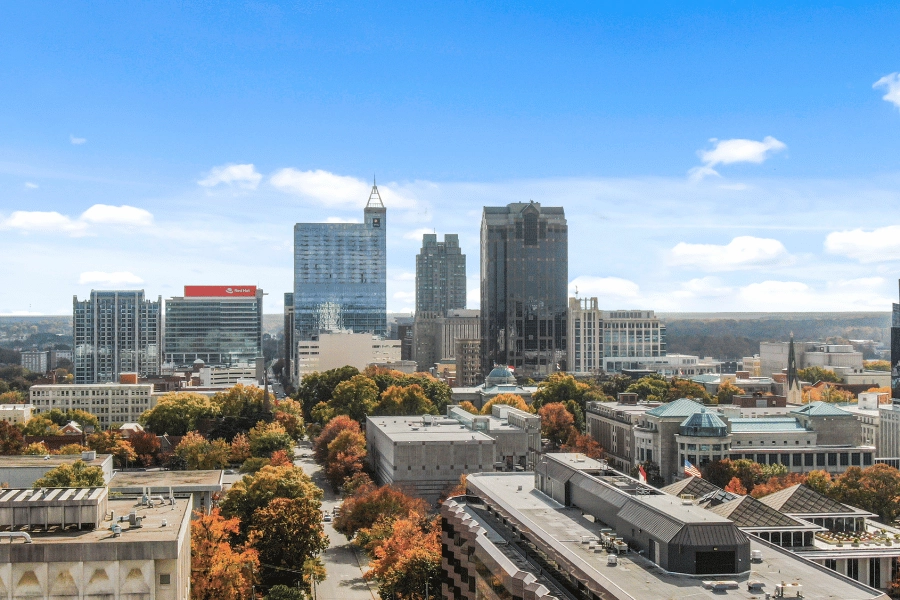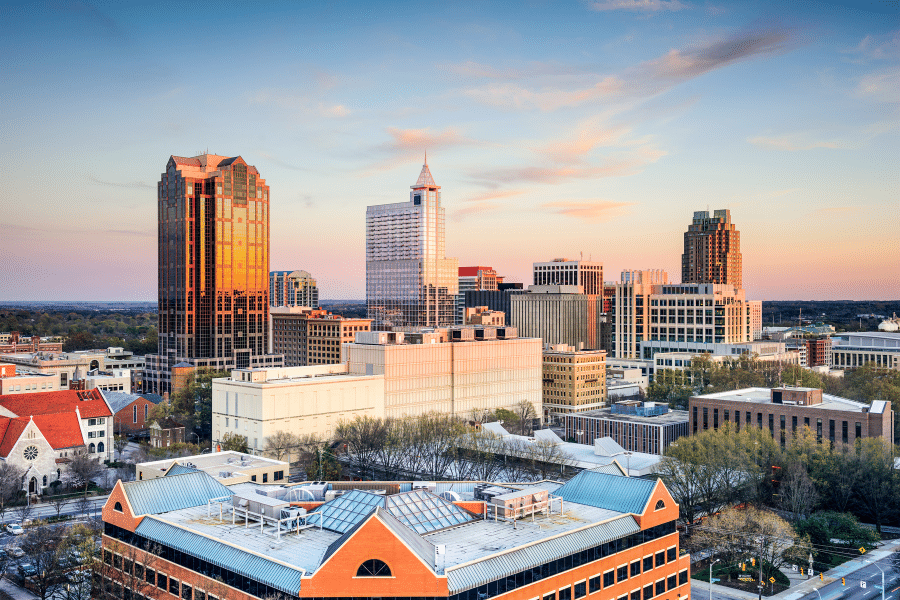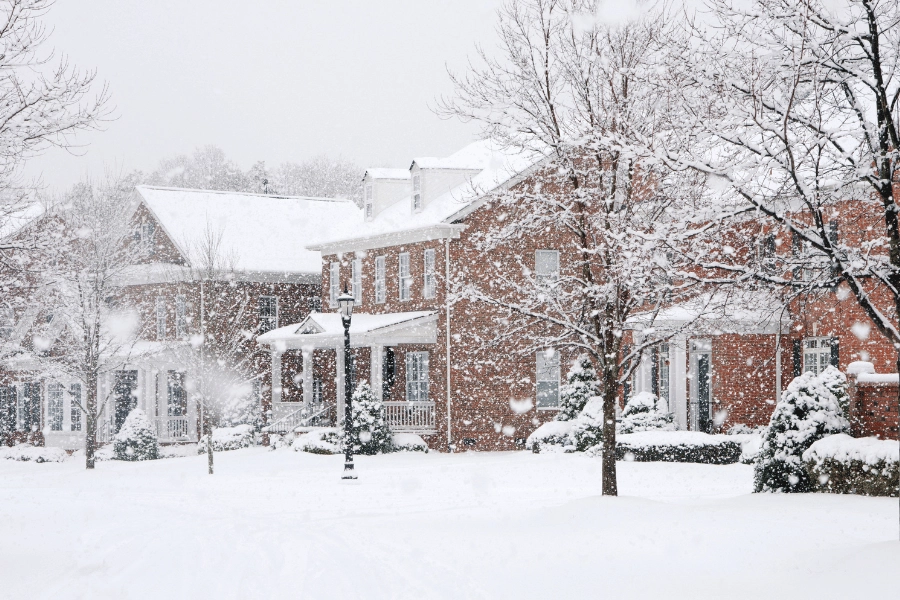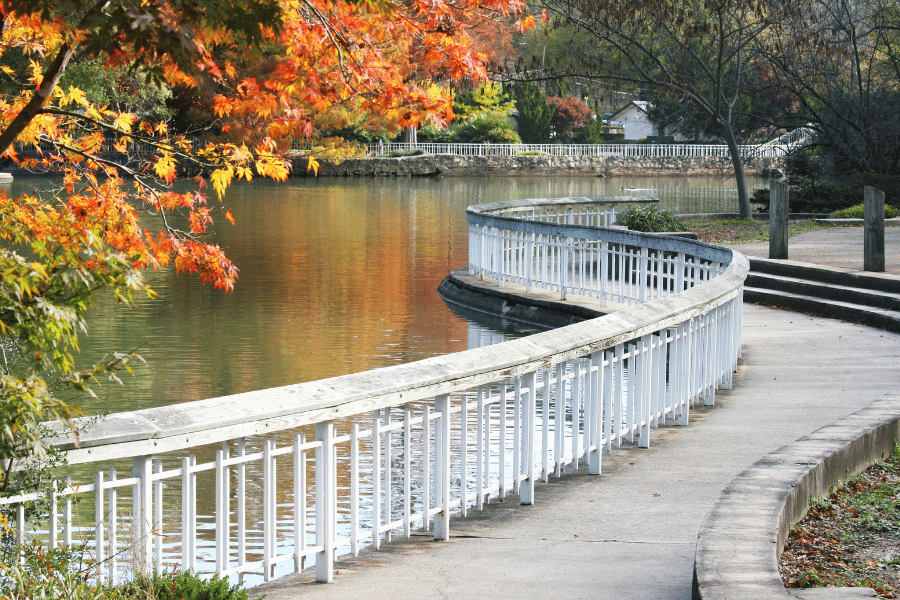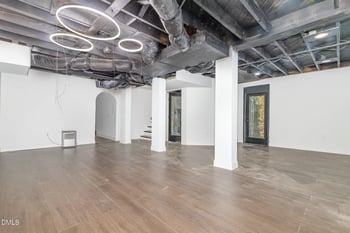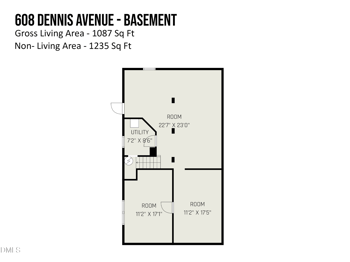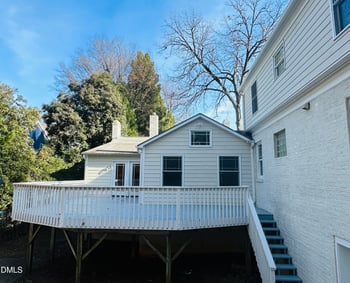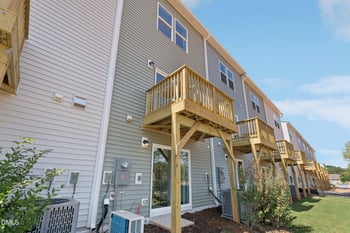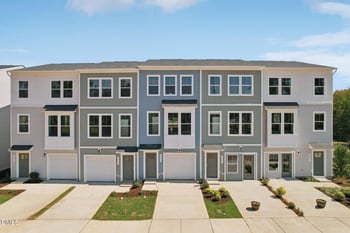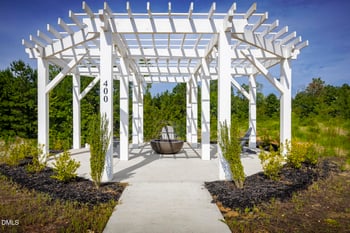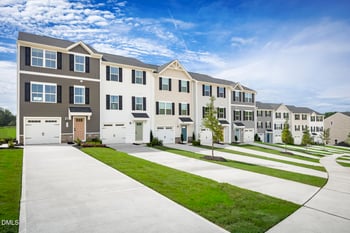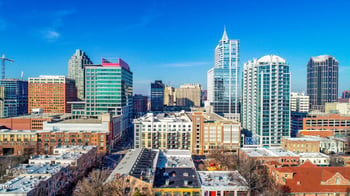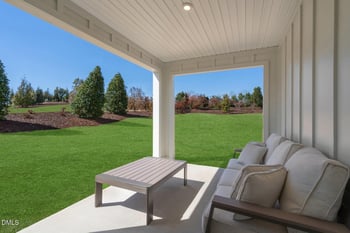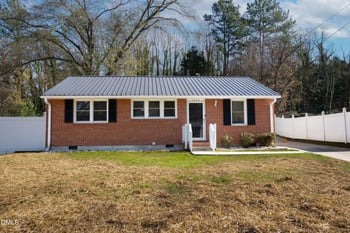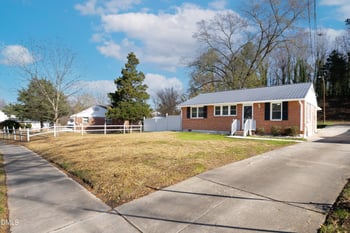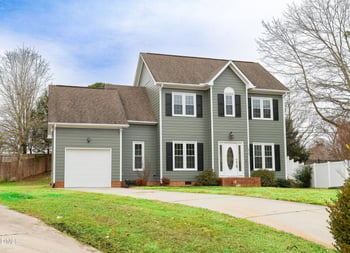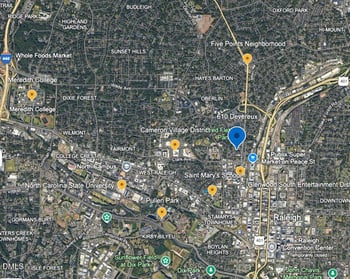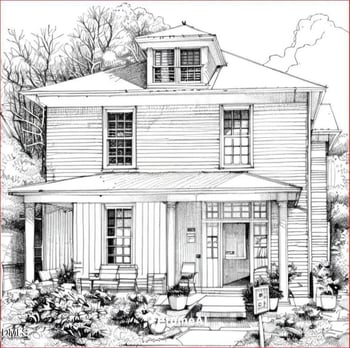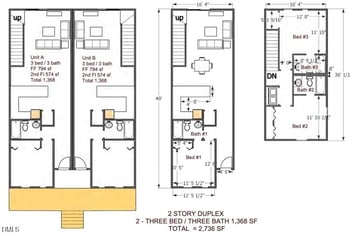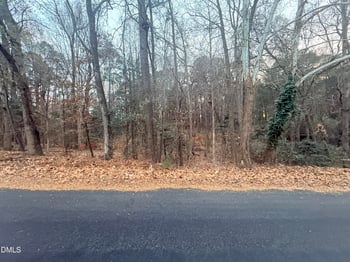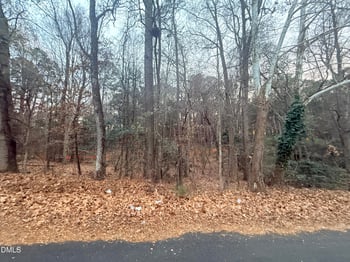Raleigh's Climate and Weather
Are you considering making Raleigh, North Carolina, your new home? Here is what you need to know about Raleigh's climate and weather patterns.
Ranked as the number one city with the best quality of life in the United States and the second-best in the world, Raleigh is an excellent place to relocate to for many reasons.
As this area rapidly expands, more job opportunities, restaurants, schools, and prime real estate are emerging in and around these localities. Whether you are moving to find your dream home, for an excellent education, or for a job, this city has something to offer everyone.
As one of the fastest-growing cities in the Southeast, Raleigh offers a humid subtropical climate that provides distinct seasons while maintaining relatively mild conditions year-round.
If you are considering moving to Raleigh, it's essential to understand its climate and temperature to determine if it's the best option for you. Here's everything you need to know about Raleigh's weather patterns to help you prepare for life in the Triangle.
Here is what you should know about the weather in Raleigh, NC.
1. Raleigh's Climate
Raleigh enjoys a humid subtropical climate characterized by hot, muggy summers and short, mild winters. The city experiences a pleasant four-season climate that rarely reaches extreme temperatures. Throughout the year, temperatures typically range from 33°F to 89°F, with temperatures rarely dropping below 20°F or climbing above 95°F.
The area receives abundant rainfall year-round, contributing to the region's lush greenery and vibrant landscapes. The average annual precipitation of 46 inches is above the national average of 38 inches. Raleigh maintains its reputation as a green, garden-friendly city.
Despite these extremes, Raleigh is often considered one of the best places to live, work, and visit due to its mild climate that experiences all four seasons. The Triangle region experiences fewer tornadoes than the Midwest, less hurricane damage than coastal areas, and milder temperature swings than northern cities.
The area enjoys an average of 218 sunny days per year, which is above the national average of 205 days, providing plenty of opportunities to enjoy the outdoors throughout all four seasons.
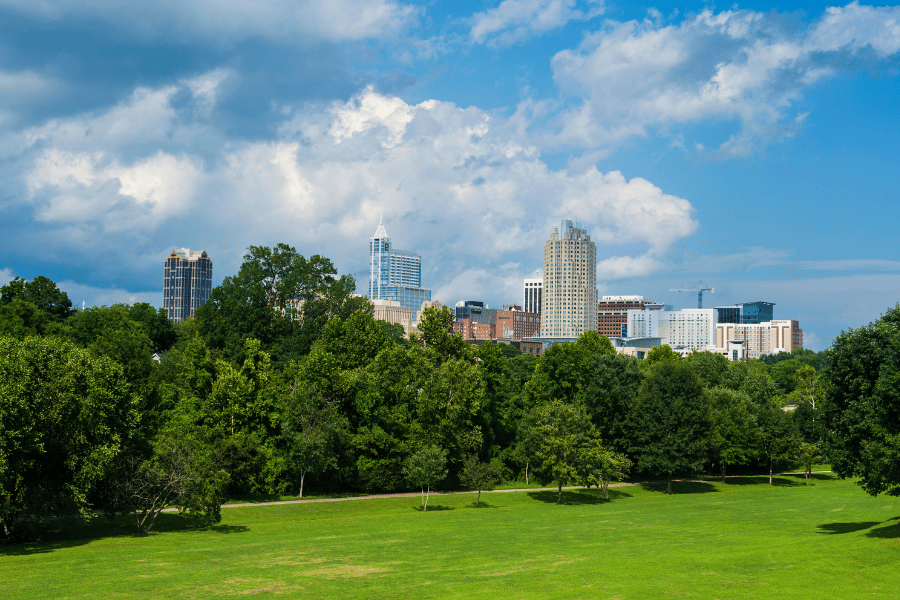
2. Raleigh Weather Averages
The hot season lasts for about 3.6 months, from May to September, with an average daily high temperature above 81 degrees Fahrenheit. The hottest month of the year in Raleigh is July, with an average high of 89 degrees Fahrenheit with a low of 70 degrees.
The cooler seasons in Raleigh last for about three months, from November to February, with an average daily high temperature below 59 degrees Fahrenheit. The coldest month of the year here is January, with average lows in the 30s and highs in the 50s.
Raleigh is known for experiencing a wide range of temperatures and weather patterns throughout the year, from summer to fall and spring to winter. At the same time, the actual weather conditions can vary depending on weather patterns; North Carolina as a whole is known for having diverse weather conditions.
Here are Raleigh's overall weather averages:
| Annual High Temperatures - Summer | 90 Degrees Fahrenheit |
| Low Yearly Temperatures - Winter | 30 Degrees Fahrenheit |
| Average Annual Rainfall | 46 inches |
| Average Annual Snowfall | 4 inches |
| Average Sunny Days | 218 days per year |
*Data Sourced from Best Places.
3. Spring in Raleigh (March to May)
Spring arrives early in Raleigh, making it one of the most beautiful times of the year. The season brings mild temperatures and blooming dogwoods, azaleas, and cherry blossoms throughout the city.
Raleigh experiences very pleasant spring weather, with average temperatures ranging from the low 70s to the mid-80s. The weather can vary widely from March to May, with frequent rain and cold air outbreaks, as well as hot periods with summer-like temperatures.
Springtime in Raleigh offers a good balance of chill and warmth. In March, temperatures start to rise gradually with many mild and cooler days, while in April, more warmth arrives, with highs reaching about 70 degrees Fahrenheit.
Overall, spring in Raleigh is characterized by mild temperatures, occasional rain showers, and blossoming flowers and greenery, making it an enjoyable season for outdoor activities.
Spring is relatively dry compared to other seasons, with April typically being the least humid month at around 61% humidity. The pleasant weather makes spring an ideal time for house hunting and getting acquainted with your new neighborhood.
Weather Conditions:
- Moderate rainfall with occasional afternoon thunderstorms
- Comfortable humidity levels
- Longer daylight hours
- Variable weather patterns as winter transitions to summer
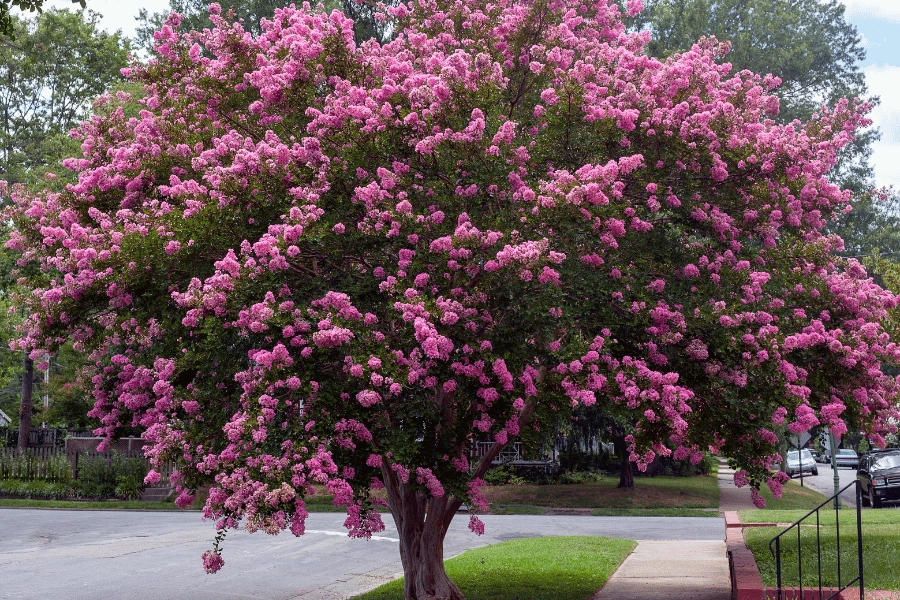
4. Summer in Raleigh (June to August)
Summers in Raleigh are hot and humid, typical of the southeastern United States. While temperatures can feel intense, the abundance of trees throughout the city provides natural cooling and shade.
In the summer, the average temperatures will range from the mid-80s to mid-90s, often with very high humidity. Sunscreen, sunglasses, and staying hydrated are highly emphasized during this time of year here. The wettest months of the year are July, August, and September.
Summer humidity levels peak in August at around 78%, making temperatures feel warmer than they actually are. The combination of heat and humidity creates that characteristic "muggy" feeling common throughout the Southeast. Air conditioning becomes essential during these months, so factor this into your utility budget planning.
Occasionally, between late summer and early fall, Raleigh can be affected by hurricanes or their remnants. Hurricane season runs from June to November, but the likelihood of occurrence is highest from August to October.
Raleigh is far enough away from the coast to not be hit by the hurricane's peak, but it may still be impacted by the remnants of hurricanes hitting the beach.
Weather Conditions:
- July, August, and September are the wettest months of the year
- Frequent afternoon and evening thunderstorms
- Occasional severe weather, though tornadoes are relatively rare
- Long, bright days with shorter nights
5. Fall in Raleigh (September to November)
Fall is arguably Raleigh's most spectacular season, offering comfortable temperatures and stunning foliage. The city's abundant trees create a brilliant display of autumn colors, making it a favorite time for both residents and visitors.
Fall high temperatures in Raleigh range from the 60s to 70s, and low temperatures reach the 40s in the mornings and evenings. You can experience a pleasant mix of summer heat and cooler temperatures during this time.
Usually spanning from September to November, the temperature highs can start in the 70s or even 80s and then gradually drop down to the 50s and 60s by the end of the fall season. This period is also marked by the changing of the leaves, which creates picturesque landscapes throughout the Triangle area.
November is typically the driest month, with average rainfall of just 2.7 inches. The combination of mild temperatures, lower humidity, and reduced rainfall creates perfect conditions for outdoor activities. This is prime time for hiking, visiting farmers' markets, and enjoying outdoor festivals.
Weather Conditions:
- Crisp, comfortable days with cool nights
- Lower humidity levels
- Minimal rainfall
- Beautiful fall foliage from October through November
- Hurricane season (though direct hits are rare)
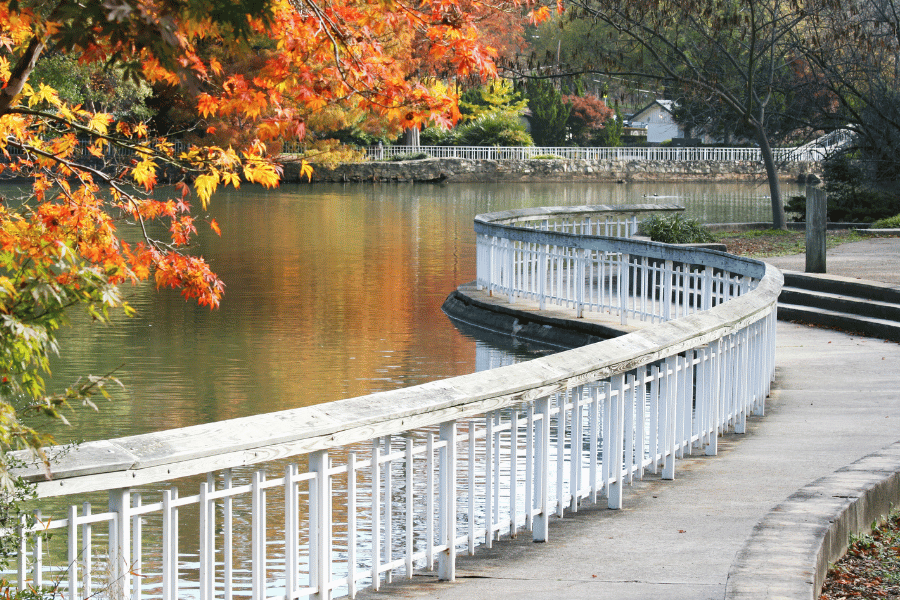
6. Winter in Raleigh (December to February)
Raleigh winters are short and mild compared to northern cities, making the area attractive to those seeking to escape harsh winter climates. While cold snaps do occur, extended periods of freezing weather are uncommon.
The average temperature during the day usually hovers in the low 50s but can drop way below, particularly at night, to the low 30s. Since winter has fewer daylight hours, expect cold nights and mornings. It is quite cold in Raleigh from December to February, with some mild periods throughout.
The snowy season typically lasts from December through March, but snow accumulation is usually minimal. When snow does fall, it often melts quickly, rarely staying on the ground for more than a day or two.
Overall, winters in Raleigh are characterized by cooler temperatures and occasional wintry weather. Although snowfall is not very common here, you can expect inclement weather but milder conditions compared to colder climates in the North.
Winter Weather Characteristics:
- Short cold periods followed by milder days
- Occasional ice storms (more common than heavy snow)
- Generally sunny days with crisp air
- Dormant season for most plants and trees
7. Unique Weather Patterns and Considerations
Rainfall
Unlike many regions with distinct wet and dry seasons, Raleigh receives fairly consistent precipitation year-round. The wettest months are during summer (July-September), while late fall and early winter tend to be drier. This consistent moisture pattern supports the area's thriving gardens and landscaping.
Snowfall
Snowfall in Raleigh varies, just like rain. The snowy season typically lasts for three months, starting in December and ending in March, with an average snowfall of one inch.
February is the snowiest month in Raleigh, with an average snowfall of 2.7 inches. The snowless season lasts for around nine months, starting in March and ending in December, with July being the month with the least snowfall.
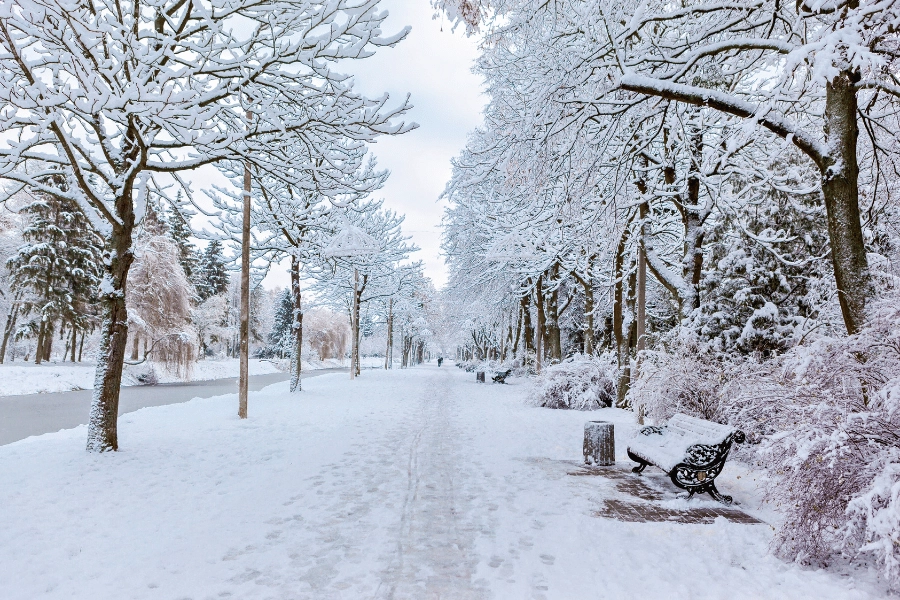
Humidity
Raleigh, North Carolina, experiences extreme seasonal variation in humidity. The muggiest period of the year lasts for about 4.5 months, from May to October. During this time, the comfort level is muggy, oppressive, and miserable about 20% of the time.
The month with the most muggy days is July, with an average of 24.5 days. In contrast, February has the fewest muggy days. Unfortunately, humidity is expected throughout the year, making it a persistent problem for the inhabitants.
This consistent moisture contributes to the area's lush vegetation but means you'll want to invest in good dehumidification for your home.
Severe Weather
While Raleigh doesn't experience extreme weather regularly, residents should be aware of:
- Occasional severe thunderstorms with heavy rain and strong winds
- Rare tornado activity (much less frequent than the Midwest)
- Tropical weather systems during hurricane season (June-November)
- Ice storms in winter, which can be more disruptive than snow
Microclimates
Raleigh's rolling topography creates subtle microclimates throughout the area. Neighborhoods in valleys may experience cooler temperatures and more frost, while hilltop areas might be slightly warmer and breezier. The abundant tree canopy also creates cooler pockets throughout the city.
Methodology
Data was sourced from the US Climate Data, Weather Spark, and Visit Raleigh to determine the climate and weather averages in Raleigh, NC.
FAQs
Does Raleigh get all four seasons?
Raleigh, the heart of the state, offers a temperature climate with four distinct seasons. Raleigh experiences generally moderate temperatures during spring and fall, with a range of mid-60s and 80s.
Is Raleigh very humid?
For the whole year, the average relative humidity for Raleigh is about 85% in the morning, and on average, the humidity is about 54%, meaning the overall annual moisture is about 71% here.
What is the weather like in Raleigh throughout the year?
On average, July is the hottest month in Raleigh, with average high temperatures in the 90s, while January is the coolest month, with average high temperatures in the 50s.

Raleigh Climate and Weather Averages - The Bottom Line
Raleigh's climate offers the best of both worlds: distinct seasons without extreme weather. The combination of mild winters, beautiful springs and falls, and manageable summers creates an environment where you can enjoy outdoor activities year-round.
While summer humidity requires some adjustment for newcomers, the overall climate contributes to Raleigh's high quality of life and makes it an attractive destination for families, professionals, and retirees alike.
Whether you're planning to buy your first home in Raleigh or relocating for work, understanding the local climate will help you make informed decisions about where to live, what to expect, and how to make the most of North Carolina's capital city.
Are you ready to find your perfect home in Raleigh's ideal climate? Contact the experts at Raleigh Realty today to explore neighborhoods that match your lifestyle and preferences.
